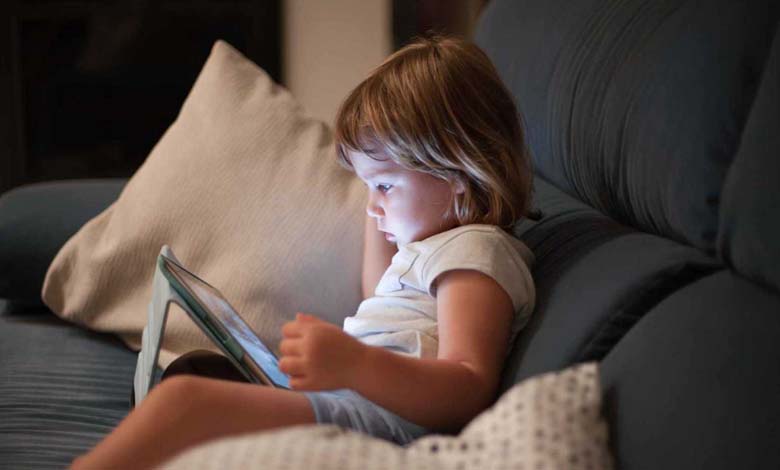Does blue light affect children’s sleep? A scientific analysis of its real impact

In recent years, digital screens have become an integral part of children’s daily lives. Smartphones, tablets, televisions, gaming consoles and computers surround them from an early age, reshaping their routines and their relationship with technology. As this exposure increases, an important question arises: does the blue light emitted by screens affect children’s sleep quality? Scientific evidence increasingly suggests that this specific type of light disrupts the biological mechanisms that regulate sleep, and that children are especially vulnerable to its effects.
Blue light is a natural component of daylight and serves as a biological signal of wakefulness. When children are exposed to it in the evening, at a time when their brains should be preparing for sleep, it can disturb their circadian rhythms, delay sleep onset and reduce total sleep duration. This disruption is amplified by the fact that children’s eyes filter light less efficiently than those of adults, making them more sensitive to its impact.
Studies show that evening exposure to blue light suppresses the production of melatonin, the hormone responsible for initiating sleep. Even a slight reduction in melatonin levels can significantly affect children, leading to difficulty falling asleep, lighter sleep, more frequent nighttime awakenings and greater daytime fatigue. Some experts also believe that chronic exposure may influence emotional stability and concentration, as insufficient sleep affects cognitive development.
Screens pose a dual challenge: they emit stimulating light and offer highly engaging content. Fast-paced games, dynamic videos and interactive applications activate brain areas linked to excitement and cognitive activity. This mental stimulation prolongs alertness and delays the natural decline toward rest, essential for falling asleep. As a result, children face a combined effect: both overstimulation and melatonin suppression.
The consequences of poor sleep extend far beyond tiredness. Sleep deprivation in children can affect mood regulation, memory consolidation, learning ability and immune function. Research indicates that children who use screens within an hour before bedtime sleep on average one hour less than those who follow screen-free evening routines. While this difference may seem small, it becomes significant when accumulated over months or years.
Despite these concerns, eliminating screens from children’s lives is neither realistic nor desirable. Digital tools play an important educational role and support communication and creativity. What truly matters is establishing healthy and balanced usage habits. Experts recommend avoiding screens at least one hour before bedtime, activating night modes when available, reducing screen brightness and encouraging calming evening routines such as reading or quiet play.
For the youngest children, especially those under five, screen exposure should be strictly limited. Their biological rhythms are particularly sensitive, and blue light exerts a stronger influence compared to older children or teenagers. Parents can support better sleep by creating a soothing nighttime environment with dim lighting, no flashing toys and consistent bedtime routines.
Sleep is a cornerstone of children’s physical and psychological development. It supports memory, emotional regulation, growth and hormonal balance. Any disruption to sleep can have long-term consequences, including academic difficulties, emotional instability and reduced overall well-being.
Ultimately, scientific evidence clearly indicates that blue light affects children’s sleep, especially when exposure occurs during the evening. However, with mindful and structured screen habits, this risk can be managed effectively. Parents and caregivers play a crucial role in shaping routines that respect children’s biological needs while integrating technology in a thoughtful and balanced way.












